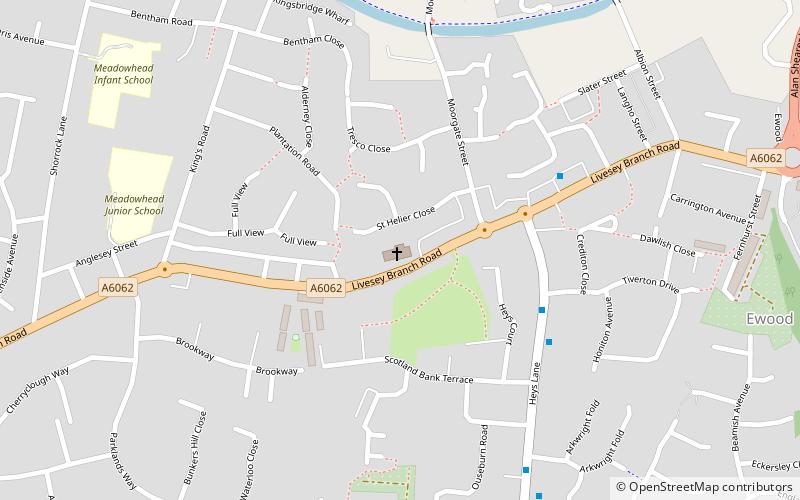Blackburn: Gothic Revival Architecture
Places and attractions in the Gothic Revival architecture category
Blackburn Cathedral
Cathedral built between 1820 and 1977 Blackburn Cathedral, officially known as the Cathedral Church of Blackburn Saint Mary the Virgin with St Paul, is an Anglican cathedral situated in the heart of Blackburn town centre, in Lancashire, England.
St Anne's Church
St Anne's Church is a Roman Catholic Parish church in Blackburn, Lancashire, England. It was founded in 1848, built in 1926 and designed by the architectural firm of Hill, Sandy & Norris of Manchester, who were also behind the construction of St John the Baptist Church in Rochdale.
Pleasington Priory
Pleasington Priory, or the Church of St Mary and St John Baptist, is a Catholic church in the village of Pleasington, Lancashire, England. It is recorded in the National Heritage List for England as a designated Grade I listed building.
Holy Trinity Church
Holy Trinity Church is in Mount Pleasant, Blackburn, Lancashire, England. It is a former Anglican parish church which is now redundant and under the care of the Churches Conservation Trust. It is recorded in the National Heritage List for England as a designated Grade II listed building.
St Silas' Church
St Silas' Church is in Preston New Road, Blackburn, Lancashire, England. It is an active Anglican parish church in the deanery of Blackburn with Darwen, the archdeaconry of Blackburn, and the diocese of Blackburn. The church is recorded in the National Heritage List for England as a designated Grade II* listed building.
St Mary's Church
St Mary's Church is in Church Lane, Mellor, Lancashire, England. It is an active Anglican parish church in the deanery of Whalley, the archdeaconry of Blackburn, and the diocese of Blackburn. The church is recorded in the National Heritage List for England as a designated Grade II listed building.
St Andrew's Church
St Andrew's Church is in Livesey Branch Road, Blackburn, Lancashire, England. It is a redundant Anglican church designed by the Lancaster architect E. G. Paley. The foundation stone was laid in December 1866, but the church was not consecrated until 1877. As first built, the church seated 652, and cost £6,000.
Map







